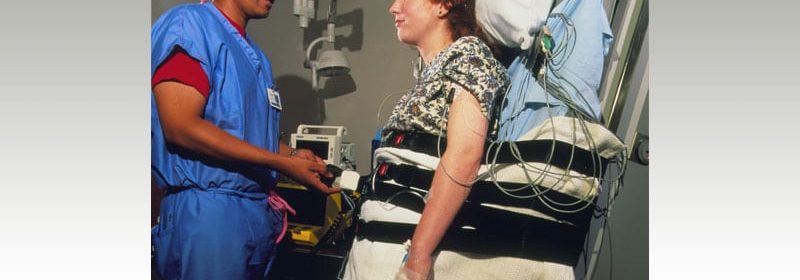Can Ablation Abolish Vasovagal Syncope? Early Series Promising

The first US safety and efficacy study of radiofrequency (RF) catheter ablation for vagal denervation in patients with neurocardiogenic syncope suggests the procedure can correct autonomic bradycardia and usually prevent syncopal recurrences with a low risk for complications.
The case series builds on decades of sporadic international registry studies and other experiences with an ablation procedure that remains an undeveloped frontier. Researchers say, however, that cardioneural ablation could potentially spare many younger patients with medically resistant vasovagal syncope from needing a pacemaker implant, at least until they are much older.
The cohort’s 71 adult patients with neurocardiogenic syncope underwent the procedure at 13 centers over 8 years. Of those, 66 patients, or 82%, remained free of syncope episodes over an average 8.5 months. The other five developed recurrences and had re-do ablations, reported Roderick Tung, MD, University of Arizona College of Medicine, Phoenix, at the Heart Rhythm Society 2022 Scientific Sessions. The meeting was held virtually and live in San Francisco.
Given there is no standard medical therapy for the condition and given RF ablation’s potential for averting or delaying pacemaker therapy, “these initial data support a potential expanded indication for catheter ablation and randomized clinical trials,” Tung said.
The technique “seems to work better” in patients who are 50 years or younger, which is apt because clinicians generally want to avoid pacemaker therapy in younger patients for various reasons, Tung told theheart.org | Medscape Cardiology. For example, a first pacemaker implantation later in life would require fewer device replacements due to battery depletion.
It still up in the air whether such cardioneural ablation can work well or be safe in children or adolescents with vasovagal syncope, which can sometimes be severe, Tung said. But it seemed to be both effective and safe in the current patients, who ranged in age from 30 to 60 years (average, 47 years); about half were women.
“Their median episodes went from six to zero, so, really impressive. It was almost too good to be true when we were reading these data,” said Tung, who also cautioned that the average patient follow-up was fairly limited, at less than 9 months.
Indeed, the procedure’s durability remains a question mark, but international experience suggests the ablations can keep working for at least 5 years. It’s clear that some patients in whom the ablation initially seems successful might require a “touch-up” ablation, similar to what can happen in ablation for atrial fibrillation, Tung said.
“This is a problem that we have been trying to solve for the last 3 decades,” yet there have been no important advances in available treatment options, said Dhanunjaya R. Lakkireddy, MD, Kansas City Heart Rhythm Institute, Overland Park, Kansas, from the podium after Tung’s presentation.
The current retrospective series is “a great beginning,” showing a signal of success for cardioneural ablation, he said. “But there are many fundamental concepts that need to be worked out.”
They include a need for consistent patient-selection criteria, how best to identify ablation target sites, and the optimal duration of RF energy application per target site, Tung observed. “We also don’t know what the most predictive procedure endpoint may be.”
In the current series, for example, ganglionated plexus target sites were determined by fractionated mapping in 58% of cases and high-frequency stimulation in 42%, he reported.
Those particulars and others need to be worked out and standardized, Lakkireddy said, perhaps by “creating collaborative registries across the world.” The electrophysiology community needs to “put our brains together to create a uniform approach.”
For the near future, Tung added, “prospective registries would be very nice, comparative IDE [investigational device exemption] studies would be preferable, and multicenter trials would be a dream — sham controlled!”
Patients in the current series had been referred because of sinus bradycardia, vasovagal syncope, or, in three cases, atrioventricular block. Their diagnoses were confirmed usually by ambulatory monitoring, but also by tilt-table testing or implantable loop recorder, Tung reported.
Complications included one cardiac tamponade and two junctional rhythms, he said, for a rate of 3.9% across the 71 de novo and five repeat procedures. “Other than that, we did not see any major complications.”
Tung discloses receiving honoraria or fees for speaking or consulting from Abbott, AtriCure, Biotronik, and Medtronic. Lakkireddy discloses receiving research grants from Medtronic, Atricure, and Biosense-Webster; consulting or serving as an advisor for Medtronic, Abbott Medical, Boston Scientific, Atricure, Acutus, Cardiovia, AltaThera, AME, Phillips, and Biosense-Webster; and serving on a speakers bureau for Boston Scientific, Biosense Webster, and Janssen Pharmaceuticals.
Heart Rhythm Society (HRS) 2022 Scientific Sessions. Abstract LB-734. Presented April 30, 2022.
Follow Steve Stiles on Twitter. For more from theheart.org | Medscape Cardiology, follow us on Twitter and Facebook.
Source: Read Full Article